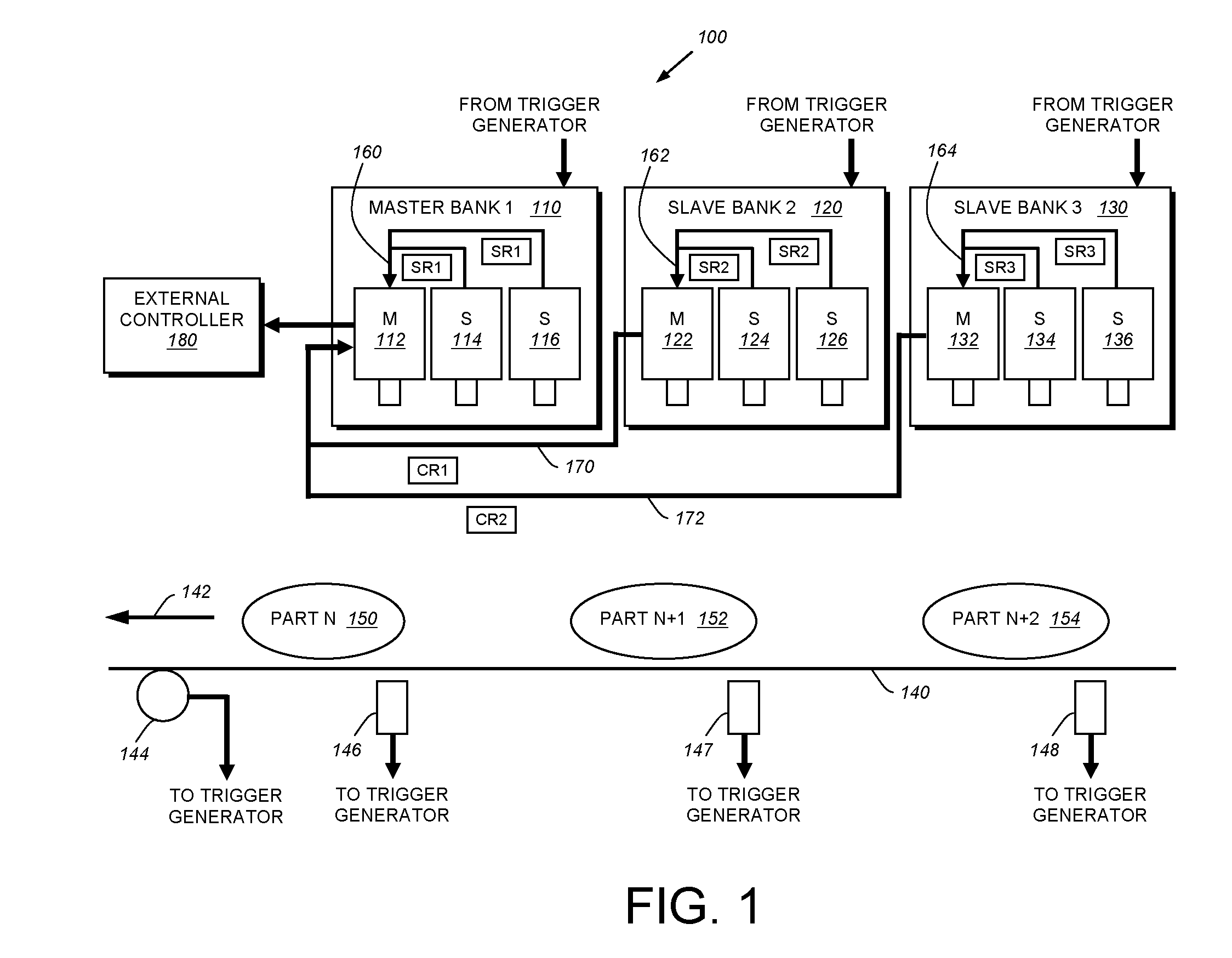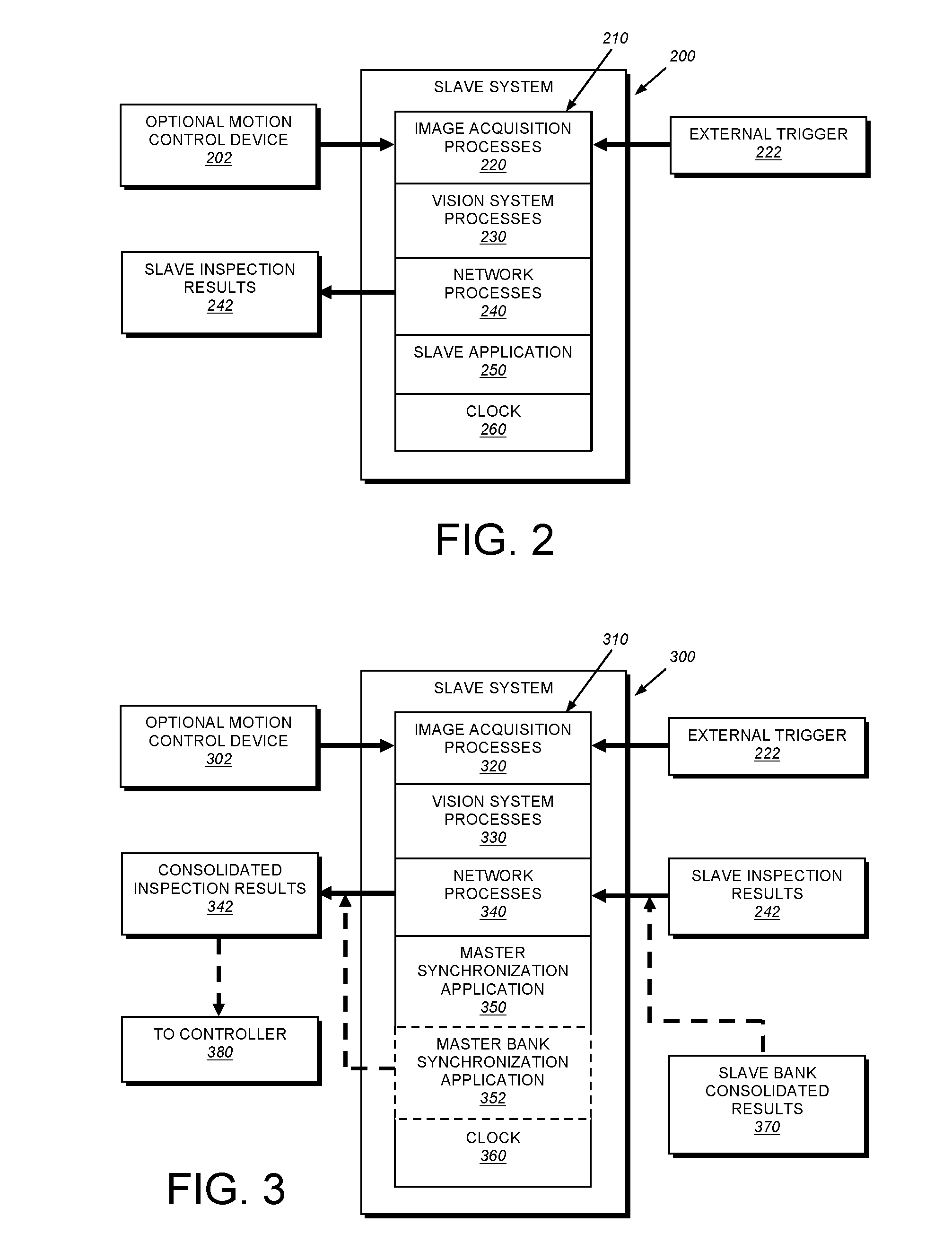Distributed vision system with multi-phase synchronization
a vision system and multi-phase technology, applied in the field of multi-camera vision systems, can solve the problems of difficult to determine if a given result pertains to a specific inspection cycle or another inspection cycle, render synchronizing the results even more difficult, and prove very difficult and time-consuming to provide reliable results, etc., to achieve rapid recovery and increase timing accuracy
- Summary
- Abstract
- Description
- Claims
- Application Information
AI Technical Summary
Benefits of technology
Problems solved by technology
Method used
Image
Examples
Embodiment Construction
[0023]FIG. 1 is a schematic diagram of an exemplary arrangement of a multi-phase, multi-processor machine vision system 100 according to an illustrative embodiment. This arrangement 100 is exemplary of a wide variety of possible camera arrangements according to illustrative embodiments. The number of cameras and their placement is widely variable. In this example, each camera is assumed to contain an independent processing device. In other arrangements the processing devices may be physically separated from the cameras, and any given processing device may process images from one or more cameras. Likewise, cameras can be physically or optoelectronically manipulated by a motion control device (blocks 202 in FIGS. 2 and 302 in FIG. 3) to allow variable acquisition of images from multiple or variable locations. As shown, the exemplary arrangement includes three vision system processor banks 110, 120, 130. In this exemplary arrangement, the processors are each associated with a camera / se...
PUM
 Login to View More
Login to View More Abstract
Description
Claims
Application Information
 Login to View More
Login to View More - R&D
- Intellectual Property
- Life Sciences
- Materials
- Tech Scout
- Unparalleled Data Quality
- Higher Quality Content
- 60% Fewer Hallucinations
Browse by: Latest US Patents, China's latest patents, Technical Efficacy Thesaurus, Application Domain, Technology Topic, Popular Technical Reports.
© 2025 PatSnap. All rights reserved.Legal|Privacy policy|Modern Slavery Act Transparency Statement|Sitemap|About US| Contact US: help@patsnap.com



